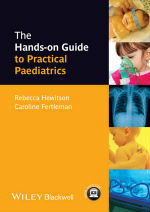
The Hands-on Guide to Practical Paediatrics
Rebecca Hewiston
Caroline Fertleman

Scenarios
Scenario 6: Community acquired pneumonia
Josie Plath is a 4-year-old girl who has been brought in by her grandma to see you at the GP surgery. She has a 5 day history of cough and fever which has not been improving. She had a viral upper respiratory tract infection for several days before the onset of the cough. She has no significant past medical history and is allergic to penicillin (anaphylactic reaction) and no family history of atopy. She is allergic to penicillin. Her weight is 18 kg. Her date of birth is 15/2/2010. She lives at 45 Victoria Road West, Wakefield, WF2 4RG.
On examination, she has no signs of respiratory distress other than tachypnoea – her respiratory rate is 40. Her oxygen saturations are 97% in air, and heart rate and capillary refill time are normal. On auscultation of her chest, you think that you may be able to hear some crackles at the left base, but there is good bilateral air entry at both bases.
-
1. You think that she has mild community acquired pneumonia and want to prescribe oral antibiotics for her. What will you prescribe?